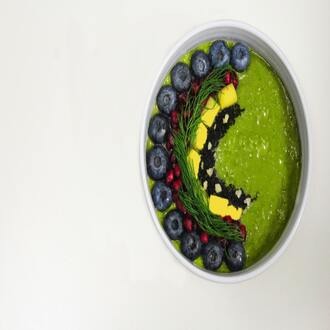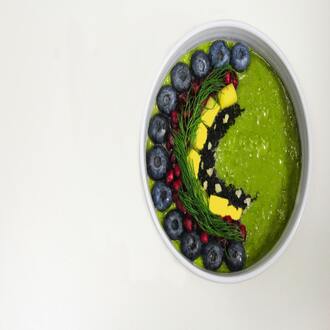Transcription How to select and count calories?
To continue with the step-by-step planning of our meal plans, and after having learned how to calculate our approximate calorie expenditure in a day; today we will learn how to choose foods and count the calories they provide, in order to ensure that our daily diet provides in a healthy way, an amount of energy that corresponds to what the body demands to achieve the goals we have set.
Although there are applications that allow you to calculate and count calories by simply entering some data on your phone or computer, in this presentation we will explain how to do it step by step, using only a pencil and a calculator, so that you can understand the reason for each figure and be sure that what you eat meets your calorie requirements.
First we must select the foods
The elements that can provide energy to our body are the following:
- Carbohydrates that provide fourkilocalories per gram.
- Proteins that provide four kilocalories per gram.
- The fats that contribute nine kilocalories per gram.
- The dietary fiber that contributes twokilocalories per gram. (The fiber does not contribute nutrients, but it promotes beneficial physiological effects for the health).
- The fifth element is alcohol, which provides a lot of energy (7 kilocalories per gram), but its consumption is detrimental to human nutrition and especially that of the athlete, because it slows down the activity of the central nervous system, dehydrates the muscles and does not provide nutrients.
What is the caloric profile of the diet?
The caloric profile of the diet is the proportion of energy delivered by carbohydrates, fats, proteins, dietary fiber and alcohol to the total caloric intake.
What is the recommended caloric profile for bodybuilders' diets?
- Mainly complex carbohydrates (cereals, legumes, seeds, fruits and vegetables) should provide between 50% and 65% of the total energy provided by the diet.
- Fats, mainly monounsaturated fats (olive oil) should supply between 20% and 30% of the total energy provided by the diet.
- Proteins should supply between 15% and 25% of the total energy provided by the diet.
- Athletes are advised not to include alcoholic beverages in the diet, but when consumed moderately and occasionally, alcohol should not contribute more than 10% of the total caloric intake.
How to calculate the energy intake of each macronutrient?
Before making the calculation, let us look at the data to be taken into account:
- The daily demand, in this case will be 2165 kilocalories, which is the figure we calculated in the last presentation.
- For the diet to be healthy the total calories must be provided by each of the macronutrients taking into account the recommended caloric profile for bodybuilders.
Taking into account this requirement we determine that:
- Of the total 2165 kilocalories the carbohydrates contribute 60%,
- fats 22%,
- and proteins 18%.
Now let's calculate: Calculation of carbohydrate intakes: Taking into account that carbohydrates should contribute 60% of the total calories, we have to determine first what amount of calories represent 60% of 2165; to achieve this we apply the rule of three:
- (2165 x 60) / 100 =1299 kilocalories represent 60% of the total.
- To know how many grams of carbohydrates we have to ingest to provide 1299 kilocalories we divide the figure by four since one gram of carbohydrates provides 4 kilocalories.
- Total carbohydrates = 1299/ 4 = 325 grams of carbohydrates.
Carbohydrates have to provide about 1299 kilocalories daily, for which 325 grams of preferably complex carbohydrates should be planned in the daily diet.
Calculation of fat intakes: If we consider that fats should provide 22% of the total daily calorie requirement, we must also apply the rule of three:
- (2165 x 22) / 100 = 476 kilocalories represent 22% of the total.
- To find out how many grams of fat we must ingest to provide 476 kilocalories, we divide the figure by nine, because one gram of fat provides 9kilocalories.
- Total fats = 476 / 9 = 53 grams
The fats have to contribute daily about 476 kilocalories for which 53 grams of fats preferably monounsaturated fats must be planned in the daily diet.
Calculation of the intakes of proteins: If we consider that the proteins must contribute 18% of the total of the daily calories demanded, we must make the same operations that in the previous cases:
- (2165 x 18) / 100 = 390 kilocalories represent 18% of the total.
- To know how many grams of protein we must ingest to provide 390 kilocalories, we divide the figure by four, because one gram of protein provides 4 kilocalories.
- Total protein = 390 / 4 = 97 grams of protein.
Proteins have to provide daily about 390kilocalories, for which 97 grams of protein, preferably of high biological value, should be planned in the daily diet.
Summarizing: To supply the daily demand of calories of an athlete of 65 kilograms of weight, 170centimeters of height and 40 years of age; that performs physical exercises of strength between 3 and 5 days we must plan in the diet around:
- 325 grams of carbohydrates.
- 53 grams of fats.
- 97 grams of protein.
What are empty calories?
Empty calories are those found in foods that provide a lot of energy but little or no nutrients. Some of the most common foods and drinks that contain empty calories are: alcohol, soft drinks, industrial pastries, pre-prepared sauces, bottled juices and sugar added to beverages such as coffee, tea, etc.
Before counting calories, it is recommended to choose foods that, in addition to sufficient amounts of energy, also provide other components such as vitamins, minerals, dietary fiber and bioactive substances. For example: It is much healthier to drink a glass of skim milk to obtain 151 kilocalories, than a glass of soft drink that provides 141 empty kilocalories.
Steps to count food calories
- Always have at hand a kitchen scale, a container that serves as a standard (a cup, a bowl, etc.), a notebook and manuals or computer applications where you can quickly consult the nutritional characteristics of any food.
- Get into the habit of consulting the nutritional information of foods when shopping.
- Write down the amounts of protein, carbohydrates, fat and calories contained in each serving or portion of the product.
- You must take into account the size of the portions. If you need to modify the size, use the scale and recalculate the amount of macronutrients and energy contained in each serving.
- So that you are not always calculating, set up and count different attractive menus for each of the meals throughout the day and plan their rotation so that they do not bore you.
calorie counting




